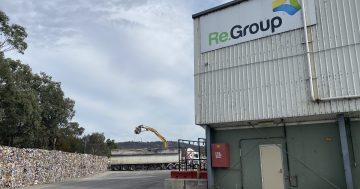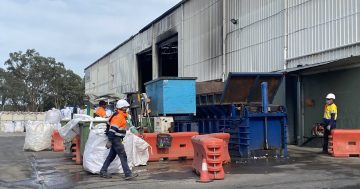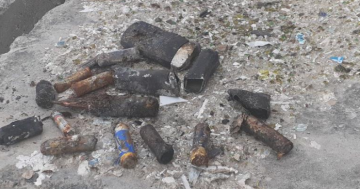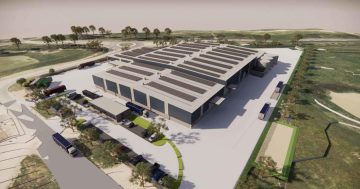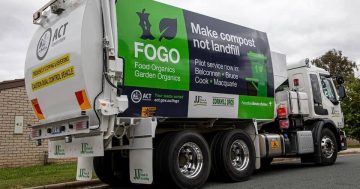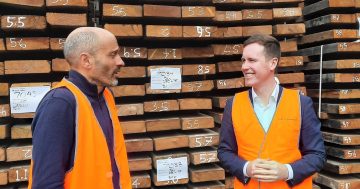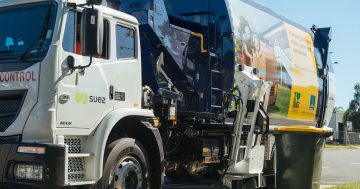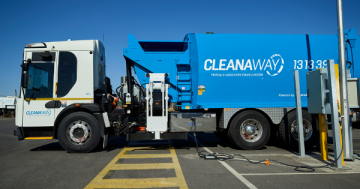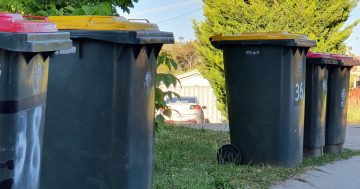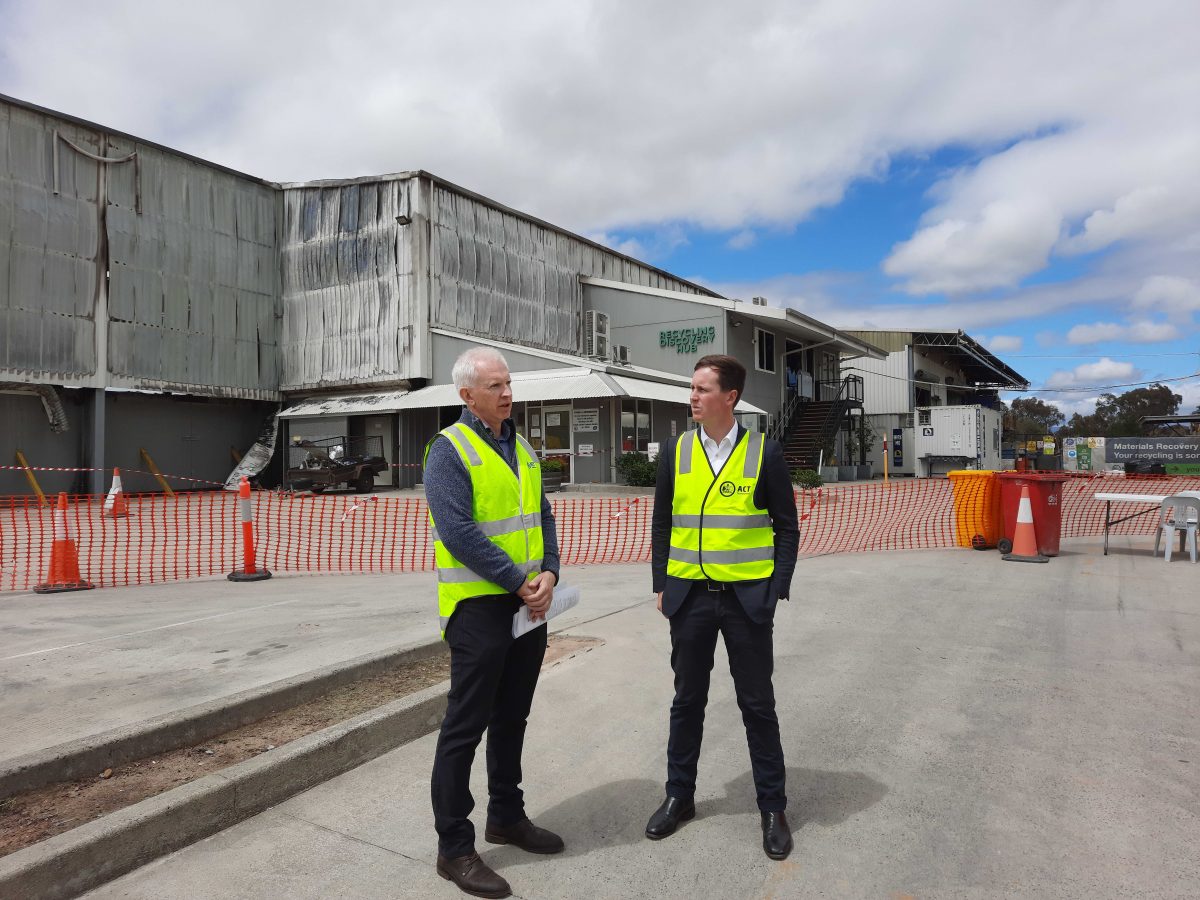
TCCS Deputy Director-General Jim Corrigan and Transport and City Services Minister Chris Steel at the fire-damaged Hume Material Recovery Facility. Photo: Ian Bushnell.
The ACT Government will pull out all stops to fast-track the planned new recycling plant, but the reality is the fire at the Hume Material Recovery Facility is a significant setback that could take years to get over.
On Friday, Transport and City Services Minister Chris Steel provided an update on the recycling situation after the Boxing Day blaze, the cause of which may never be known.
Mr Steel said Canberrans should continue to place recyclable paper, cardboard, bottles, cans and plastics in their yellow top bins as usual, and use the Container Deposit Scheme and Recycling Drop-off Centres.
He said the 200 tonnes a day of material that the ACT and surrounding region generated and usually processed in Hume was being stockpiled while 36 tonnes a day were being trucked to Sydney.
But not all waste could be transported, particularly paper and cardboard, because at present it was exposed to the elements, although the government was looking at what temporary cover could be constructed to protect it.
“This is a significant setback for recycling in the ACT and the whole region,” Mr Steel said.
“Unfortunately, transportation will mean extra transport emissions that will be created, and it’s an incredibly inefficient process because that material is not processed and baled here in the ACT.
“It has to be transported in its loose mixed recyclable form, processed in Sydney, which is not ideal, and then that material will go off for remanufacturing elsewhere.”
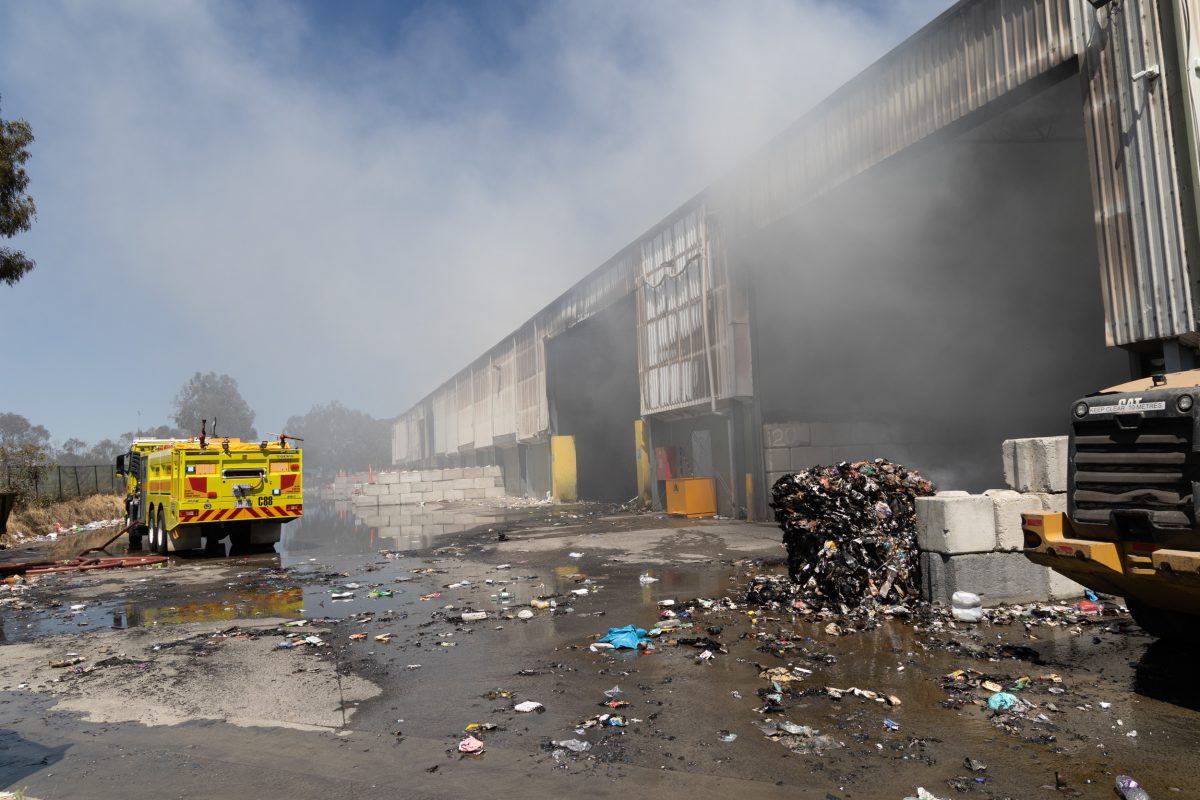
The scene at the MRF on the morning after the Boxing Day blaze. Photo: ESA.
Mr Steel said TCCS was looking at how to bring forward the construction of the new state-of-the-art facility announced with Federal Environment Minister Tania Plibersek last year and slated for start-up in the latter half of 2024.
“We’re looking at all elements of the procurement process, the design process, the planning process that’s involved, as well as the construction to make sure that we’ve got a facility that can cater for the future needs of the ACT. But in the interim, we are starting to transport waste interstate to recycling facilities, and that will likely happen over a period of months and years,” Mr Steel said.
But it was early days and TCCS Deputy Director-General Jim Corrigan could not say if the new plant’s two-year timeline would change.
“We work as quickly as we can because it’s so important to the whole recycling operation and resource recovery in the ACT and the region,” he said.
The new facility was still likely to be adjacent to the current one, but Mr Steel indicated other options were also being considered.
Mr Corrigan said the Hume MRF operator, Re.Group, would ramp up the number of trucks taking waste to the Western Sydney facility from the current four to about 12 by the second half of the month, which should be enough to handle what came through from the yellow bins, commercial sources and the regions, as well make inroads into the stockpile, which at 4 January was 1270 tonnes.
Mr Steel said Re.Group would also have to find other facilities in Sydney to take all of the ACT region’s material.
He said the cost to the ACT of trucking the material to Sydney was significant – at about $75 to $85 a tonne – and it was expected processing in NSW facilities would also cost more than the $60 a tonne at Hume.
It’s understood the MRF’s insurance arrangements should offset some of that cost.
Structural engineers were assessing the current site, some of which may be salvageable and be able to be put to use, such as the outside baling and storage areas.
“At a minimum, we’d like to see the site used operationally as a transfer station to store material for processing interstate and other recycling facilities,” Mr Steel said.
“But there’s a bit of work to do to make sure that it’s safe. It is possible over the coming weeks that we may need to remove the roof or damaged sections of the building.”
The investigation into the cause of the fire was still ongoing and Mr Steel expected a report soon from ACT Fire and Rescue, but he said it may not be possible to determine the exact cause of the fire.
The Hume MRF processed 32,000 tonnes of material a year.












